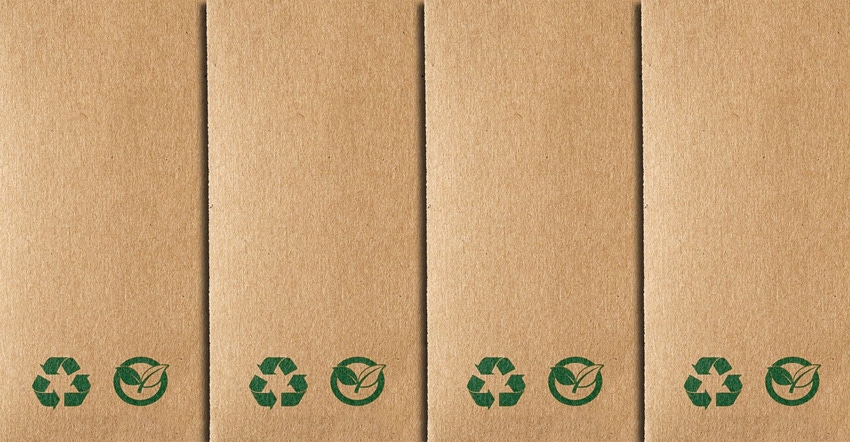When exploring sustainable packaging solutions, brands should explore options to reduce, reuse or recycle—always in this order due to their significance and impact.

Sustainability is not just a trend; it’s a movement, and the reasons are clear. Not only has it proven positive for future generations, but also for profitability.
Transitioning a product to sustainable packaging involves the balance of three—at times, competing—factors:
Performance – A sustainable package must perform and function in every way just like the current package.
Economics – The cost of the sustainable package must be close to the current package because though consumers want to buy “sustainable,” they are only willing to pay so much more.
Environmental impact – A sustainable package must have a smaller carbon footprint than the current package.
Understanding a few truths is also important:
A. Most people want to recycle, but at times they put packaging into the recycle bin that is not actually recyclable (wishful recycling)—a key problem for the recycling industry.
B. To create a sustainable life cycle for the package, all parties involved in the process must be ensured a win, including the:
Brand
Consumer
Recycler
Industry
C. Doing nothing is not only unacceptable but missing opportunities.
When exploring sustainable packaging solutions, the conversation should start with three R’s: reduce, reuse, recycle—always in this order due to their significance and impact.
Reduce: The process starts with examining the client’s current packaging to reduce the carbon footprint as much as possible. For instance, in sports nutrition, many companies have already considered this by transitioning from rigid containers to flexible packaging. The move offers sustainability and economic benefits, as the cost of a flexible package is significantly less than a rigid one. Many rigid containers are recyclable; however, a life cycle analysis (LCA) will show that other packaging formats are better environmentally. Compared to rigid containers, flexible packages are also considerably more suitable and cost-effective for shipping in the e-commerce world.
Reuse: For most food products, the prospect of a reusable package is logistically problematic. The only large-scale market where we’ve seen successful reusable packaging is the Canadian beer industry, where virtually all brewers use the same bottle, the sales are predominantly through select retailers, consumers are charged a deposit, and all the major brands are set up to wash and reuse the same bottles. A system like that would be problematic to bring into any industry; however, as another option, brands like Häagen-Dazs are trialing a way to move to reusable packaging using an organization called Loop. Reuse is still in its infancy but could possibly be a solution in the future.
Recycle: When brands have reduced as much as possible and reuse where they can, the only way to improve sustainability is to ensure their packages are recyclable, made from recycled content or, better yet, recyclable and made with recycled content. This area has seen a lot of technical advancements. To be truly recyclable, a package needs to be made from only one type of plastic, referred to as “mono polymer.” In the past 18 months, the technology for making mono polymer flexible packaging has come a long way; in fact, flexible packaging is now available that’s made with 30% recycled content and considered mono polymer.
Currently most municipalities will not accept flexible packaging in curbside pickup; however, these packages can be eligible for the How2Recycle program, where over 18,000 locations are available to drop off mono polymer packaging. A simple tool on PlasticFilmRecylcing.org will identify the closest recycling location based off entering one’s ZIP code.
Another “green” solution being promoted is bioplastics. Derived from plant-based materials, some have claimed packaging made from bioplastics is carbon-neutral—in reality, most of these bags will end up in landfill, or worse, into the recycle stream where the bioplastic bags will contaminate the recycle stream with less desirable polymers.
Packaging also exists that claims to degrade, which is when an additive is introduced to artificially accelerate the breakdown of the plastics (which would normally take a few hundred years). In most cases, this just creates microplastics, which are a major problem for the environment. Also, if degradable bags enter the recycle stream, it not only diminishes the value of the recycler’s product, but it can also cause the product made from the recycled material to degrade prematurely, resulting in potentially hazardous situations.
Compostable packaging has a place in some applications, but the infrastructure of industrial composting is sparce, so most compostable packaging will end up in landfill, or worse—the recycle stream. Compostable packaging challenges include package weight limitations and barrier requirements, so these factors should be examined before choosing compostable packaging.
Looking at packaging options through the aforementioned lens of performance, economics and the environment impact can bring perspective:
Current packaging offers preferred performance, acceptable economics and unacceptable environmental impact.
Degradable packaging carries preferred performance, but unacceptable economics and environmental impact.
Compostable packaging provides unacceptable performance, acceptable economics and unacceptable environmental impact.
Bio-based packaging entails preferred performance, unacceptable economics and acceptable environmental impact.
Recycled-content packaging brings preferred performance and economics, and acceptable environmental impact.
Recyclable packaging can equate to preferred ratings in all three areas.
Recyclable with recycled content gives preferred performance, acceptable economics and preferred environmental impact.
To read more about green packaging and access a complimentary resource, visit “Introducing the Sustainable Packaging Toolkit” on Natural Products Insider.
Glenn Treliving is the principal at Partners Packaging. He has spoken at several trade events and is considered an industry expert in sustainable packaging. Reach him at [email protected].
About the Author(s)
You May Also Like






.png?width=800&auto=webp&quality=80&disable=upscale)